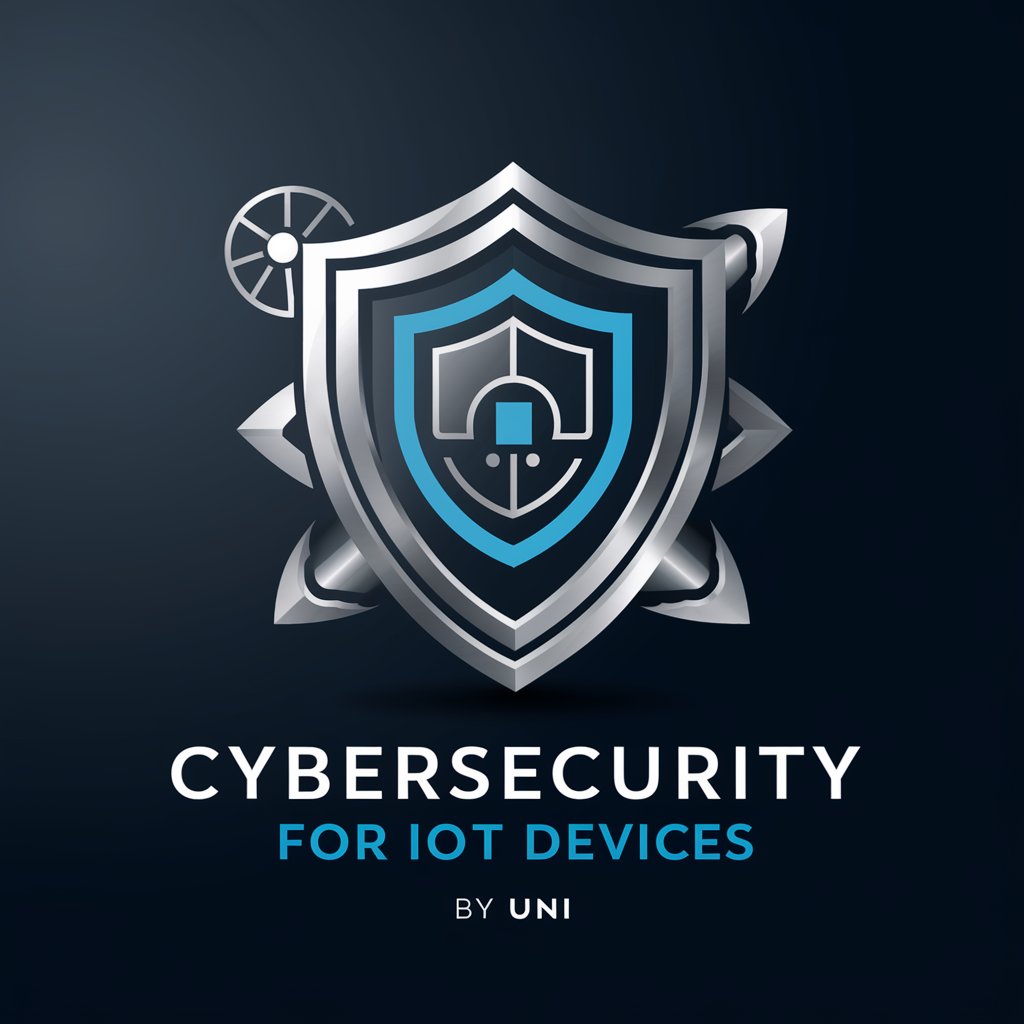Cybersecurity for IoT Devices - IoT Device Protection

Welcome to IoT Cybersecurity by Uni. Let's safeguard your smart devices!
Empowering IoT Security with AI
What are the main vulnerabilities in IoT devices?
How can I secure my smart home network?
What steps should I take to protect my IoT devices from cyber threats?
Can you explain the importance of regular device audits in IoT security?
Get Embed Code
Overview of Cybersecurity for IoT Devices
Cybersecurity for IoT Devices is designed to address the unique security challenges posed by Internet of Things (IoT) devices. These devices, ranging from smart thermostats to industrial sensors, are interconnected and often collect, transmit, and process data autonomously. The primary purpose of this service is to protect these devices from cyber threats, such as unauthorized access, data theft, or manipulation. For example, securing a smart home system involves ensuring that all connected devices like cameras, door locks, and lighting systems are protected against hacking attempts, which could lead to privacy breaches or allow intruders to gain physical access. Powered by ChatGPT-4o。

Core Functions of Cybersecurity for IoT Devices
Vulnerability Assessment
Example
Identifying security weaknesses in a smart factory's network
Scenario
Conducting a thorough analysis of the factory’s IoT infrastructure to detect vulnerabilities that could be exploited by cyber attackers, such as unpatched software or weak authentication protocols.
Network Security Management
Example
Securing data transmission in a smart home environment
Scenario
Implementing encryption and secure communication protocols to protect the transmission of sensitive data between devices in a smart home, preventing eavesdropping or data interception.
Device Authentication and Authorization
Example
Ensuring that only authorized users can access a smart door lock
Scenario
Setting up multi-factor authentication and strict access controls for a smart door lock to prevent unauthorized access and ensure that only residents can unlock the door.
Regular Security Updates and Patch Management
Example
Updating firmware to protect against the latest threats
Scenario
Automatically downloading and installing updates for IoT devices to fix security vulnerabilities and protect against emerging threats.
Target User Groups for Cybersecurity for IoT Devices
Home Users
Individuals or families with smart home devices who need to protect their personal data and ensure their home security systems are impenetrable to hackers.
Businesses and Organizations
Companies of all sizes that utilize IoT devices for operations, requiring robust cybersecurity measures to protect sensitive data and maintain operational integrity.
Manufacturers of IoT Devices
Producers of IoT products who must ensure that their devices are secure from cyber threats right from the design phase to maintain consumer trust and comply with regulatory standards.

Getting Started with Cybersecurity for IoT Devices
Initiate Your Cybersecurity Journey
Start by exploring cybersecurity solutions for IoT devices at yeschat.ai, offering a complimentary trial without the necessity for login credentials or a ChatGPT Plus subscription.
Identify Your Needs
Assess the cybersecurity needs of your IoT devices. Consider factors like device types, network setup, and personal or professional use to tailor your cybersecurity approach.
Leverage Educational Resources
Utilize the educational resources provided, including tutorials, guides, and best practices for securing your IoT devices against potential cyber threats.
Implement Security Measures
Follow step-by-step guidelines to enhance your IoT devices' security, such as setting strong passwords, enabling multi-factor authentication, and regularly updating firmware.
Engage with the Community
Join forums or community discussions for additional insights, share experiences, and stay updated on the latest cybersecurity trends and threats.
Try other advanced and practical GPTs
What's my Holiday Decoration?
Discover Your Holiday Spirit

Ecuavisa GPT
Stay informed with AI-powered news

Experto en Compras Públicas del Ecuador
AI-powered Ecuadorian Procurement Guidance

RacingALX
Rev Up with AI-Powered Car Tuning

Car Tuner Copilot
Revolutionize your ride with AI-powered tuning.

Analista Legal Ecuador
Streamlining Ecuadorian Legal Insights with AI

UK Pentest, Hacking, Cyber Security Experts
AI-Powered Cybersecurity Insights

C Programming: Crafting Scalable Systems
Architecting the future with AI-powered C programming

Multi-User Scalable Code GPT
Enhance backend systems with AI-driven scalability.

Scalable Investment Shark
Empowering Your Investments with AI Wisdom

Angular Copilot
Elevate Your Angular Projects with AI-Powered Insights

Javascript
Empowering interactive web experiences

FAQs on Cybersecurity for IoT Devices
What makes IoT devices vulnerable to cyber attacks?
IoT devices often lack robust built-in security, making them susceptible to unauthorized access, malware, and various cyber threats. Their widespread connectivity also presents multiple entry points for attackers.
How can I secure my home smart devices?
Secure your home smart devices by changing default passwords, enabling two-factor authentication, connecting them to a secure network, and keeping their firmware up to date.
What is the importance of updating IoT device firmware?
Updating firmware patches security vulnerabilities, adds new features, and improves device performance, thereby reducing the risk of cyber attacks.
Can IoT cybersecurity help in data privacy?
Yes, effective IoT cybersecurity measures protect against unauthorized data access, ensuring personal information and sensitive data remain private and secure.
How often should I audit my IoT devices for security?
Regular audits, at least twice a year or whenever you add new devices to your network, are crucial to identify and mitigate potential security vulnerabilities.
